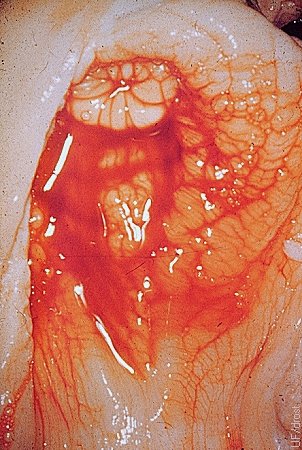
Postestrous Bleeding.
The amount of postestrual hemorrhage varies considerably and is most consistently observed as a spontaneous vaginal discharge 48 hours after the onset of estrus in 60% of cycling heifers and 40% of cycling cows.
Roberts SJ (1973)
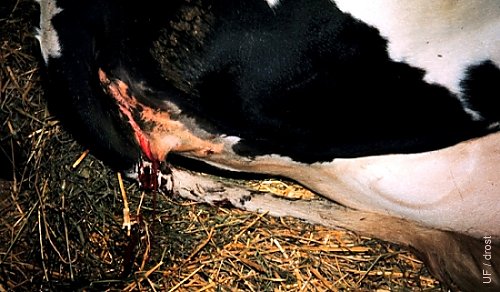
Postestrual Hemorrhage.
Postestrous bleeding occurs 2 days after the onset of estrus in 40% of cows and 60% of heifers. The amount of blood mixed with mucus varies considerably. The blood originates from the endometrium. There is no correlation with conception.
Drost M (1970)
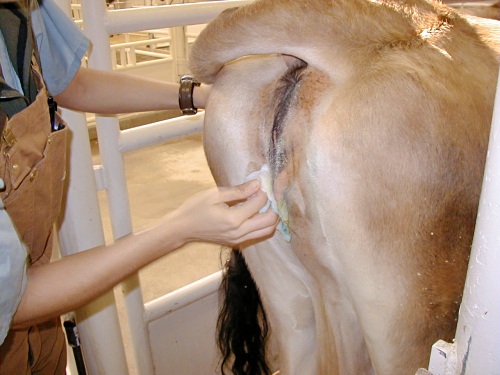
Vaginoscopy 1.
Cleanliness is important in performing an examination of the cervix and the vagina. The perineal area and the vulva should be washed and rinsed before insertion of the speculum.
Prado TM (2007)
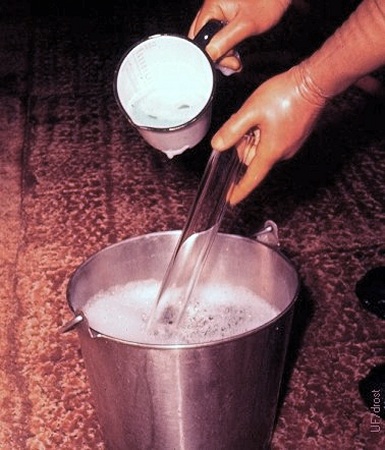
Vaginoscopy 2.
Cleanliness is important in performing an examination of the cervix and the vagina. The speculum (length 24 cm, diameter 4 cm) should be washed and disinfected between each examination. Here the speculum is rinsed with a Nolvasan solution. Foam should be rinsed from the speculum to keep glistening from "obscuring" the field of vision.
Drost M (1970)

Vaginoscopy 3.
Prior to insertion of the speculum a small amount of sterile lubricant may be added to the proximal end of the speculum.
Prado TM (2007)
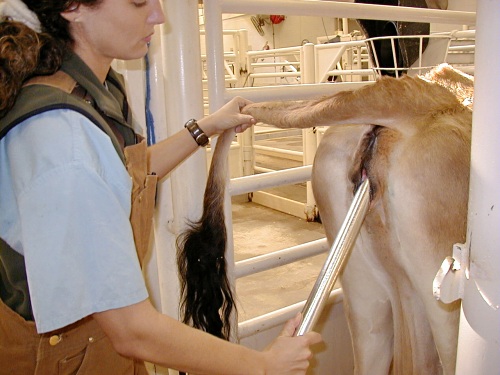
Vaginoscopy 4.
Initial insertion of the speculum should be at an angle to assure placement of the proximal end of the speculum above the floor of the pelvis.
Prado TM (2007)
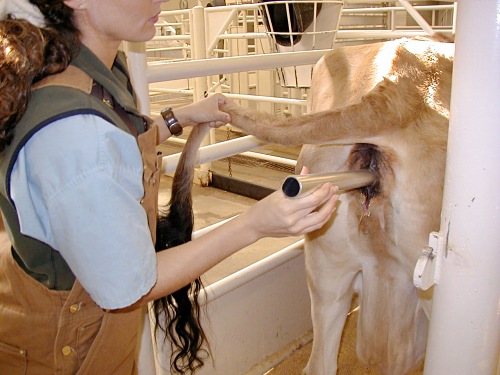
Vaginoscopy 5.
Once the anterior quarter of the speculum has been inserted into the vagina, the speculum is advanced level to the floor of the pelvis, up to the cervix.
Prado TM (2007)
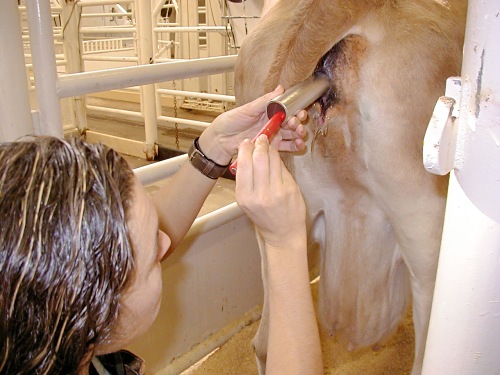
Vaginoscopy 6.
With the aid of a penlight or flashlight, the cervix, fornix and vaginal vault can be examined while slowly withdrawing the speculum. The posterior end of the speculum may be elevated during this process to look for normal mucus or abnormal discharges on the floor of the vagina.
Prado TM (2007)
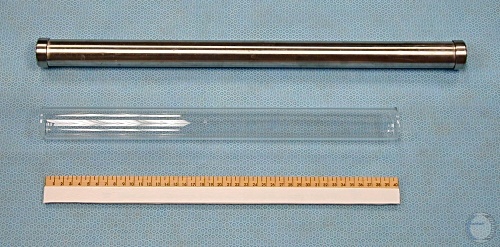
Vaginal Specula.
A stainless steel Frick speculum and a glass vaginal speculum, length 60 cm and 40 cm respectively, diameter ~ 4 cm.
Drost M (2003)

Kimberling-Rupp Instrument.
Kimberling Rupp instrument for ovariectomy of feedlot heifers by colpotomy.
Drost M (2009)
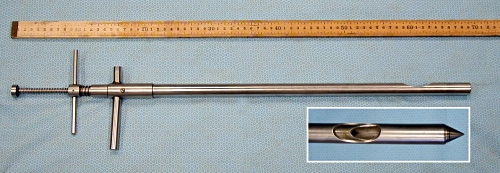
K-R Instrument with Close-up of Tip.
Kimberling Rupp instrument for ovariectomy of feedlot heifers by colpotomy. The close-up shows the chamber, (which measures 40 mm in length and 12 mm in diameter) for placement, and excision, of the ovary.
Drost M (2009)
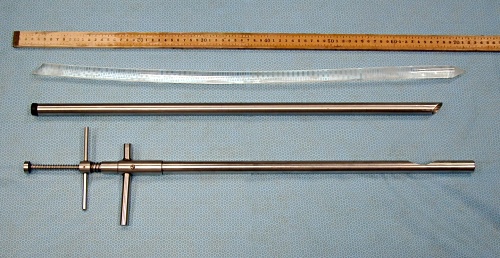
Colpotomy Instruments.
Kimberling Rupp instrument served as a model for the simplified, home made colpotomy spear. The top spear was made with a plexiglass pipe which proved to be too flexible. The stainless steel spear was made from a recycled IV stand.
Drost M (2009)
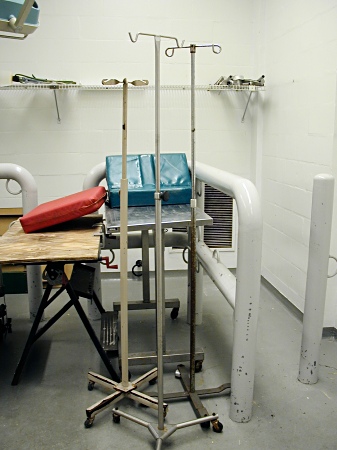
Recycled Parts.
Shafts from recycled stainless steel IV stands, or legs from small animal surgery tables, can be used to make colpotomy spears that should measure about 65 cm long and 2 cm in diameter.
Drost M (2009)
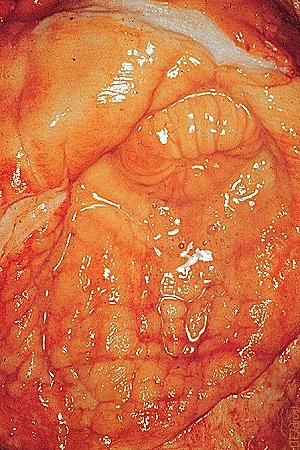
Necrotic Vaginitis.
Idiopathic necrotic vaginitis in the presence of cystic follicular degeneration.
Roberts SJ (1973)
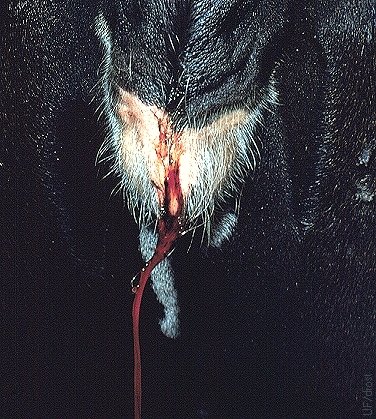
Postestrous / Metestrous Hemorrhage.
Normal vaginal discharge of blood tinged mucus, typically observed 48 hours after the onset of estrus in 40% of cycling cows and 60% of cycling heifers. The amount of blood varies from faint streaks of blood to profuse bleeding. The color varies from that of fresh red blood, to dark, black and subsequently chocolate brown as the interval from the onset of estrus to its observance increases.
Drost M (1970)
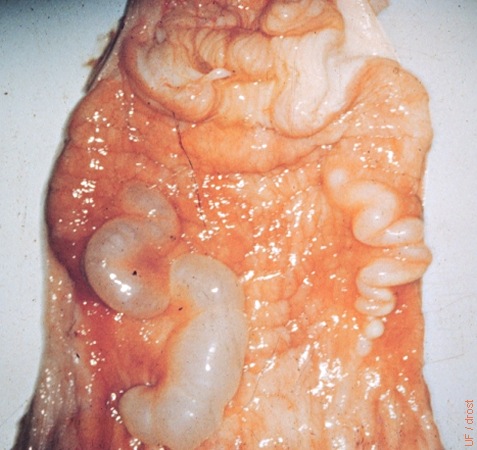
Mesonephric Duct Cysts.
Remnants of the (male) mesonephric duct system. Eponym: Gartner's ducts. Occasionally observed in 4 o'clock and / or 8 o'clock position on the floor of the anterior vagina. They have no effect on fertility. The cysts are exceptionally large in this specimen.
Roberts SJ (1973)
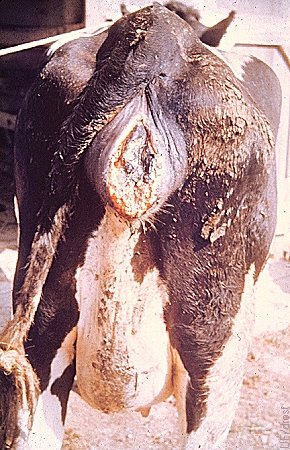
Necrotic Vaginitis.
Necrotic vaginitis may follow an excessively forceful delivery. Severe bruising with or without lacerations leads to lack of blood supply and subsequent necrosis.
Roberts SJ (1973)
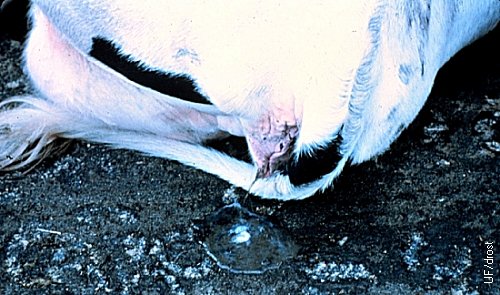
Abnormal Vaginal Discharge.
Abnormal vaginal discharge of mucus, containing a small amount of pus indicative of a reproductive tract infection, be it metritis, cervicitis, or vaginitis.
Drost M (1974)
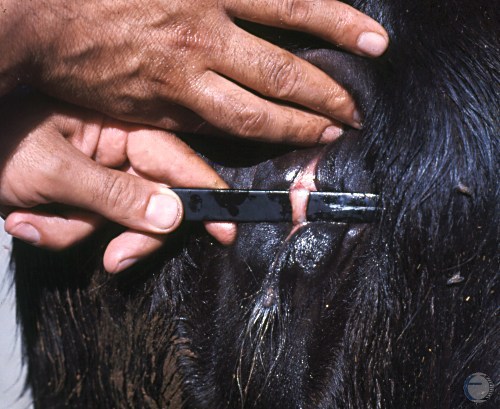
Small Persistent Median Band.
This small 1 cm wide vertical median band is the result of the incomplete fusion of the paramesonephric duct during embryonic development. It may interfere with the passage of the fetus through the birthcanal at the time of parturition.
LeBlanc MM (2013)
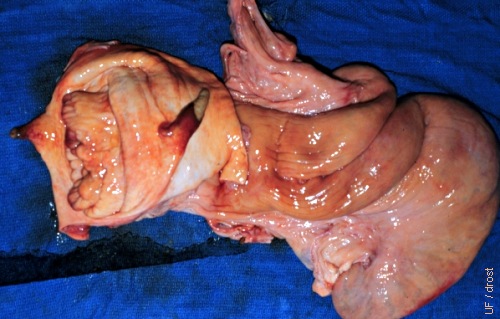
Torn Persistent Median Band.
The small, 15 mm wide vertical median band was snapped by the fetus during parturition. The cow died from unrelated causes 2.5 weeks post partum.
Drost M (1971)
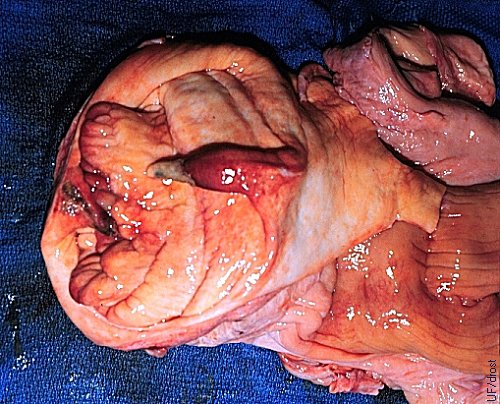
Ruptured Persistent Median Band.
The small, 15 mm wide vertical median band was snapped by the fetus during parturition. The cow died from unrelated causes 2.5 weeks post partum.
Drost M (1971)

Imperforate Hymen and Mucometra.
Congenital imperforate hymen is rare in cattle. The complete blockage results in accumulation of uterine and cervical secretions and formation of mucometra, mucocervix, and mucovagina. Note the corpus luteum. Cows and heifers with mucometra or hydrometra generally cycle normally in contrast to cows with pyometra that are anestrous for long periods of time. [size of the square tile is 15 cm]
Roberts SJ (1986)
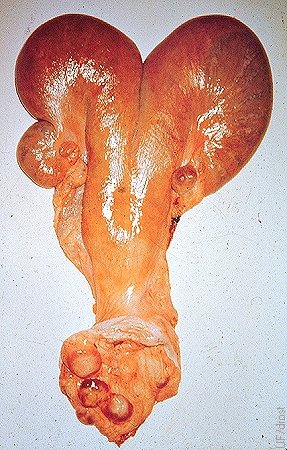
Lymphomatosis.
Nodular lesions in the anterior vagina (fornix) of a cow with lymphomatosis. Twin pregnancy; note two corpora lutea on the right ovary.
Roberts SJ (1973)
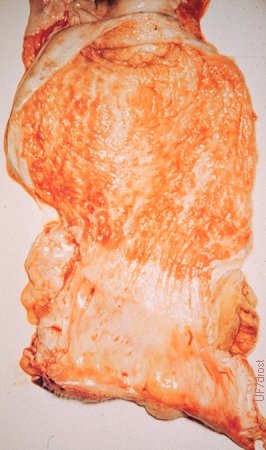
Lymphomatosis of the Vagina.
Multiple small round (miliary) lesions of the vagina due to lymphomatosis.
Roberts SJ (1973)
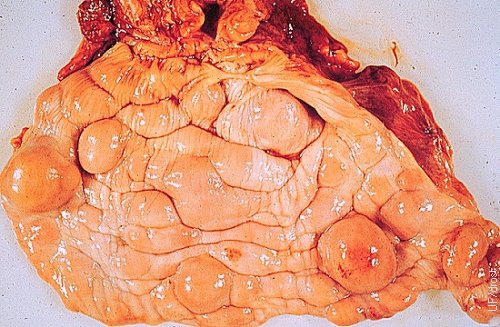
Lymphosarcoma of the Vagina.
Lymphosarcoma of the vagina. Note discrete round masses in the anterior vagina. There were also masses in the uterus.
Drost M (1971)
